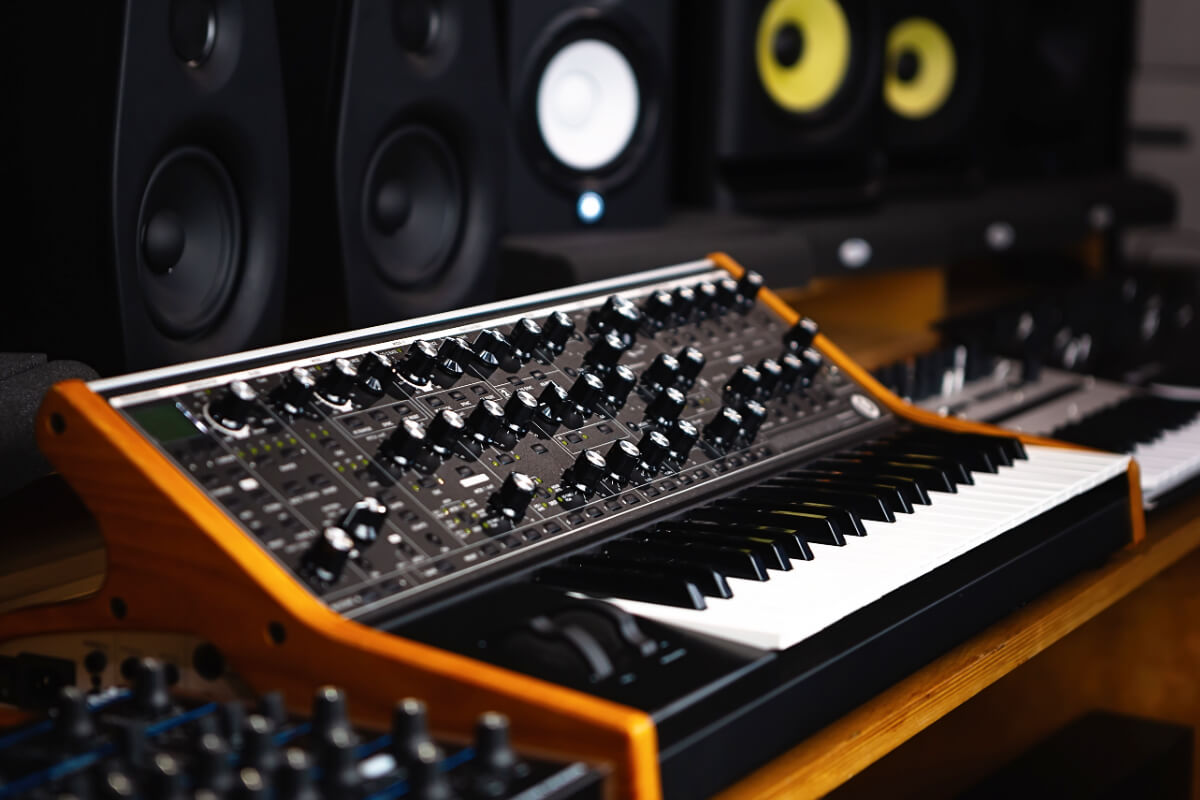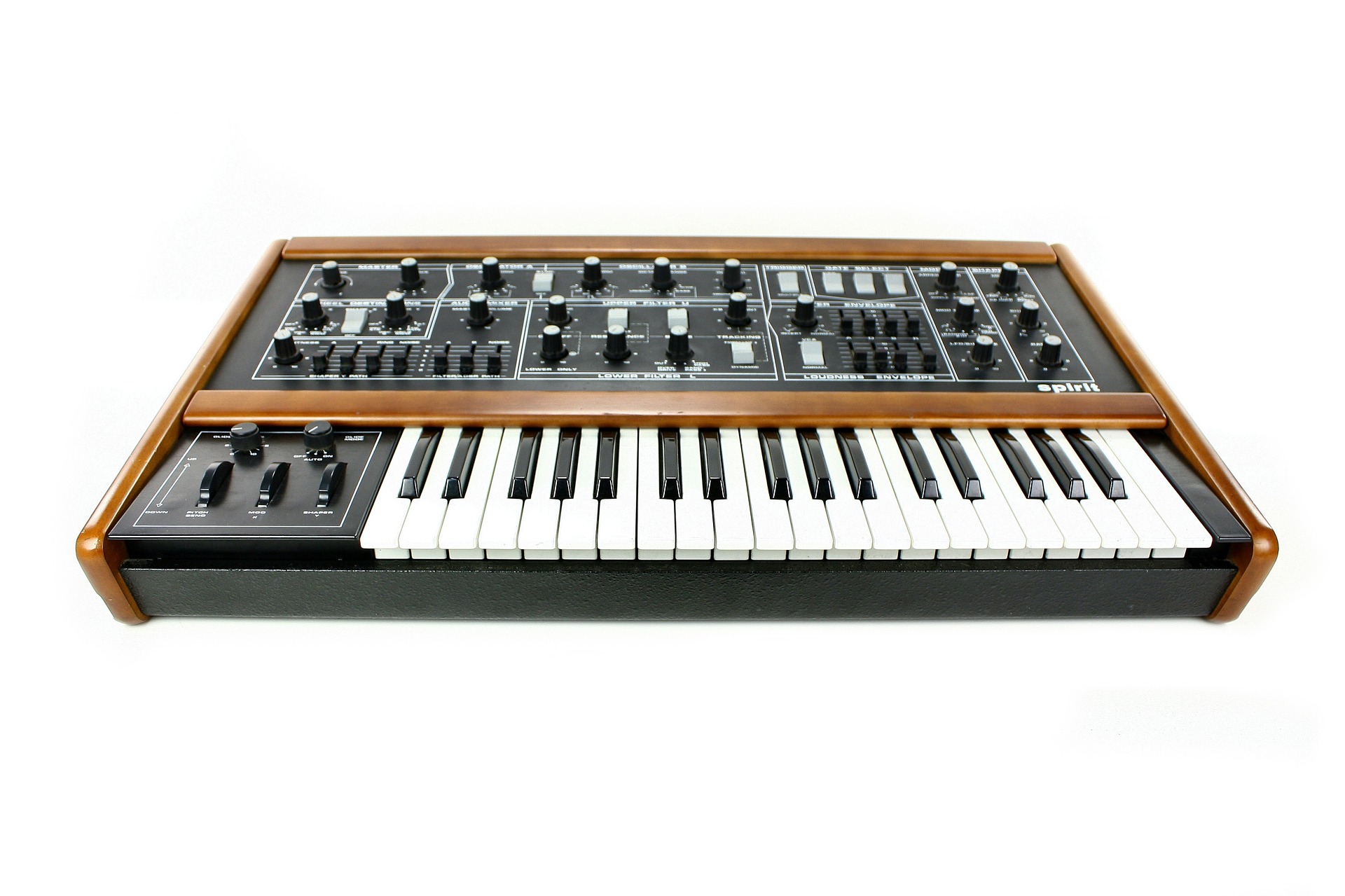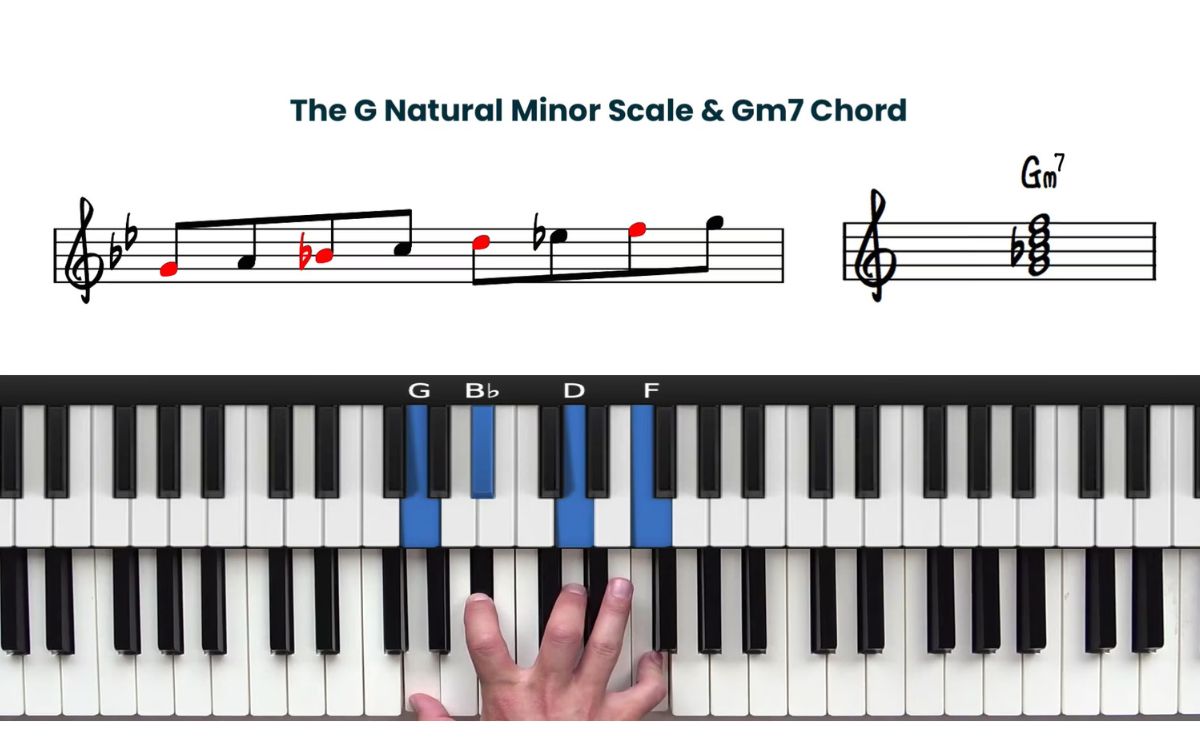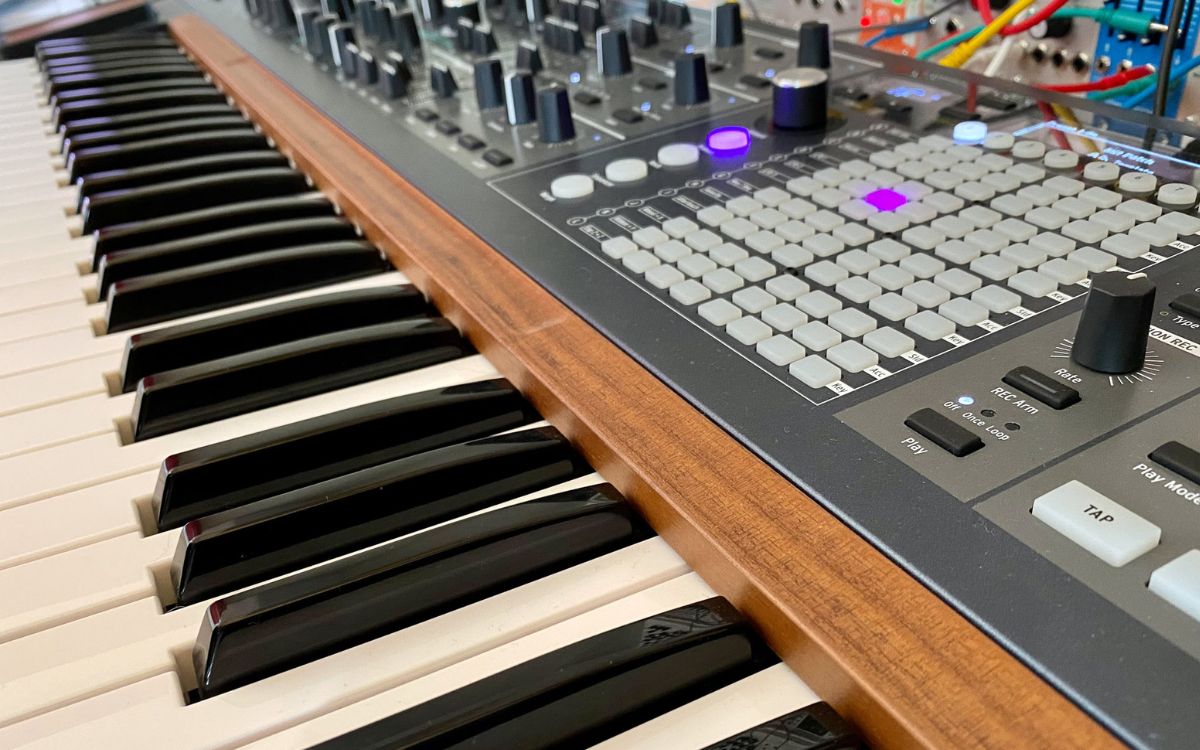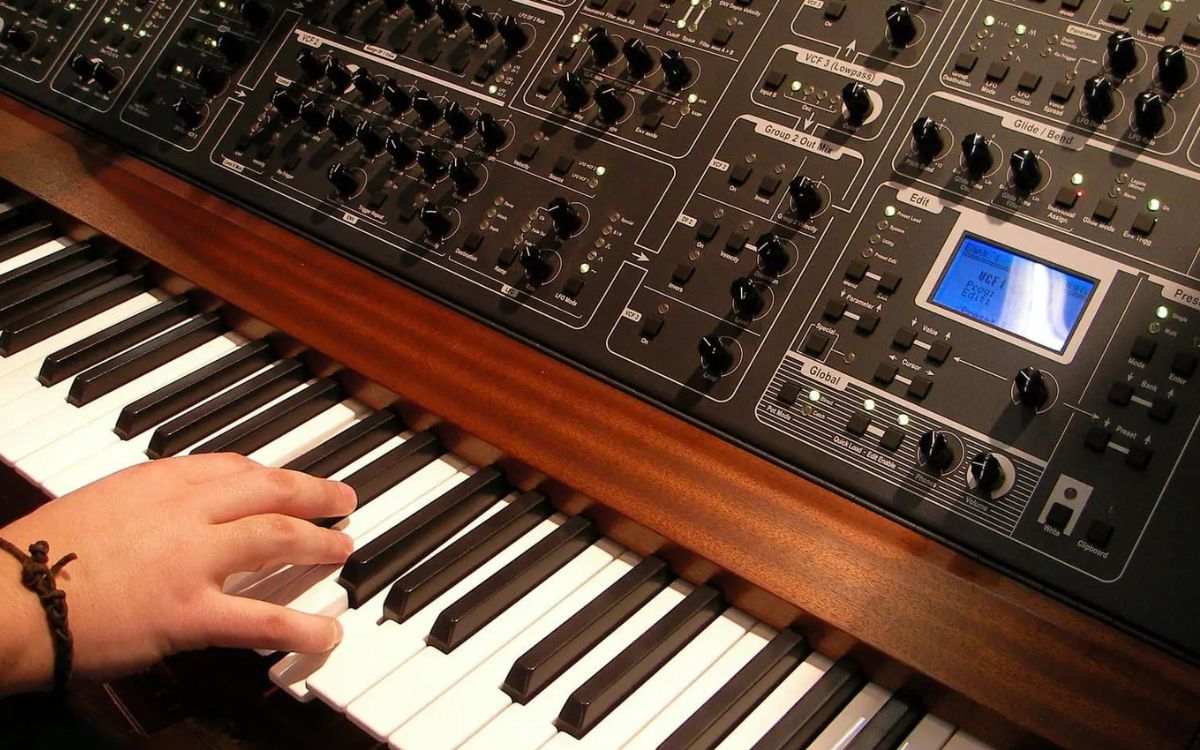Home>Instruments>Synthesizer>What Is A Pll Synthesizer


Synthesizer
What Is A Pll Synthesizer
Published: December 11, 2023
Discover what a PLL synthesizer is and how it enhances sound production. Explore the key features and benefits of this versatile synthesizer.
(Many of the links in this article redirect to a specific reviewed product. Your purchase of these products through affiliate links helps to generate commission for AudioLover.com, at no extra cost. Learn more)
Table of Contents
Introduction
The world of electronic music is filled with a myriad of instruments, each playing a unique role in creating captivating sounds. Among these instruments, one that stands out for its versatility and ability to create a wide range of tones is the synthesizer. At the heart of many synthesizers lies a crucial component known as the PLL (Phase-Locked Loop) synthesizer.
The PLL synthesizer is a fundamental building block that allows musicians, sound designers, and engineers to generate accurate and stable signals of different frequencies. From creating rich basslines to soaring leads, a PLL synthesizer opens up a world of sonic possibilities.
In this article, we will take a deep dive into the world of PLL synthesizers, exploring their basic components, operating principles, frequency synthesis techniques, advantages, applications, challenges, and future developments. Whether you are an aspiring musician, an audio enthusiast, or simply curious about synthesizers, this article will provide you with the knowledge to understand and appreciate the importance of PLL synthesizers in sound synthesis.
So, get ready to unlock the secrets of PLL synthesizers as we embark on this exciting journey of exploration and discovery.
Overview of PLL Synthesizer
A PLL synthesizer is a circuit that generates an output signal with a frequency that is a multiple of a reference input signal. It consists of several key components that work together to achieve accurate and stable frequency synthesis.
At the core of a PLL synthesizer is the Phase-Locked Loop, which is responsible for maintaining the output frequency in synchronization with the reference input frequency. The basic operation of a PLL involves comparing the phase and frequency of the input and output signals and adjusting the output frequency to match the input frequency.
The PLL synthesizer also includes a voltage-controlled oscillator (VCO), which generates a variable output frequency based on the control voltage it receives. The VCO’s output frequency is controlled by the PLL circuit to achieve the desired frequency multiplication or division.
In addition to the VCO, the PLL synthesizer incorporates a frequency divider or multiplier to achieve the desired frequency multiplication or division ratio. This allows the synthesizer to generate a wide range of frequencies from a single reference input.
The PLL synthesizer is typically controlled by a microcontroller or software, allowing for precise control and adjustment of the output frequency. This enables musicians and sound designers to create complex waveforms and modulations that can be used in various music genres and sound applications.
Overall, the PLL synthesizer is a powerful tool in the world of music and sound synthesis. Its ability to generate stable and accurate frequencies makes it an essential component in synthesizers, audio equipment, and communication systems.
In the next section, we will explore the basic components that make up a PLL synthesizer and their functions in detail.
Basic Components of a PLL Synthesizer
A PLL (Phase-Locked Loop) synthesizer consists of several key components that work together to achieve accurate and stable frequency synthesis. Understanding these components is crucial for grasping the inner workings of a PLL synthesizer.
- Phase Detector (PD): The phase detector compares the phase difference between the reference input signal and the feedback signal from the PLL’s output. It produces an error voltage that represents the phase difference between the two signals. The phase detector is responsible for the continuous adjustment of the VCO’s frequency to match the input frequency.
- Loop Filter (LF): The loop filter is an analog or digital filter that processes the error voltage from the phase detector. It removes unwanted noise, filters out undesired frequency components, and provides the necessary control voltage to the VCO for frequency adjustment.
- Voltage-Controlled Oscillator (VCO): The VCO generates the output frequency based on the control voltage it receives. The VCO’s output frequency is adjustable and its range depends on the specific design and application of the PLL synthesizer.
- Frequency Divider: The frequency divider is used to divide the output frequency of the VCO to achieve the desired frequency multiplication or division. It is a crucial component in generating accurate and stable output frequencies.
- Reference Oscillator: The reference oscillator provides a stable and accurate frequency as the reference input for the PLL synthesizer. It acts as a benchmark for the PLL to generate the desired output frequency.
- Control System: The control system, which can be a microcontroller or software, manages and adjusts the various components of the PLL synthesizer. It allows for precise control of the output frequency and other parameters, enabling musicians and sound designers to create complex and dynamic waveforms.
These components, working together in a feedback loop, ensure that the output frequency of the PLL synthesizer remains in synchronization with the reference input frequency. The accuracy and stability of the output frequency are achieved through continuous monitoring and adjustment of the phase and frequency difference between the input and output signals.
In the next section, we will explore the operating principle of a PLL synthesizer, shedding light on how these components interact to achieve frequency synthesis.
Operating Principle of PLL Synthesizer
The operating principle of a PLL (Phase-Locked Loop) synthesizer revolves around the concept of phase and frequency synchronization. It involves the continuous adjustment of the output frequency to match the input frequency, ensuring accurate and stable frequency synthesis.
The PLL synthesizer operates in a closed-loop feedback system. The input to the system is the reference signal, typically generated by a stable oscillator. The reference signal is compared with the feedback signal obtained from the output of the VCO (Voltage-Controlled Oscillator).
The phase detector, a crucial component in the PLL synthesizer, compares the phase difference between the reference input and the feedback signal. Based on this phase difference, the phase detector generates an error voltage that is proportional to the frequency difference between the two signals.
The error voltage is then filtered by the loop filter, which removes unwanted noise and provides a smooth control voltage to the VCO. This control voltage adjusts the VCO’s output frequency, bringing it closer to the desired frequency.
The adjusted output frequency from the VCO is divided by a frequency divider to achieve the desired frequency multiplication or division ratio. This divided frequency is fed back to the phase detector, creating a feedback loop. The process of comparing the phase and frequency between the input and output signals, adjusting the VCO’s frequency, and dividing the output frequency continues until the input and output signals are in synchronization.
Once the PLL synthesizer is locked, the output frequency remains stable and accurate, maintaining a constant phase relationship with the reference input signal. This allows for precise frequency synthesis and generation of complex waveforms.
The operating principle of a PLL synthesizer allows for flexibility in generating a range of frequencies, both higher and lower than the reference input. By adjusting the division ratio of the frequency divider, the PLL synthesizer can achieve frequency multiplication or division, offering versatility in sound synthesis applications.
In the next section, we will delve into the different frequency synthesis techniques used in PLL synthesizers.
Frequency Synthesis Techniques
PLL (Phase-Locked Loop) synthesizers employ various frequency synthesis techniques to generate a wide range of frequencies from a single reference input signal. These techniques allow musicians, sound designers, and engineers to create diverse and complex waveforms for different applications.
- Integer-N Synthesis: This technique uses a frequency divider to achieve integer frequency division. The output frequency is an integer multiple or submultiple of the reference input frequency. Integer-N synthesis provides precise frequency control and accuracy, making it suitable for applications requiring stable and precise frequency generation.
- Fractional-N Synthesis: In fractional-N synthesis, a fractional division ratio is used to achieve fine frequency resolution. This technique allows for more precise frequency control, enabling the generation of frequencies that are not integer multiples or submultiples of the reference input. Fractional-N synthesis is commonly used in frequency-hopping systems, spread spectrum communication, and frequency modulation.
- Phase Locked Loop Frequency Synthesizer (PLLFS): PLLFS is a technique that combines multiple PLLs in cascade to achieve high-frequency resolution and flexibility. Each PLL in the cascade is responsible for dividing the frequency by a specific ratio, allowing for greater precision and control over the output frequency. This technique is commonly used in applications where extremely fine frequency resolution is required, such as microwave and wireless communication systems.
- Digital Frequency Synthesis: Digital frequency synthesis replaces the analog VCO with a digital signal processing unit. The digital unit generates a digital signal based on mathematical calculations and lookup tables. This technique provides precise control over the output frequency and allows for complex modulation and waveform generation. Digital frequency synthesis is widely used in software-based synthesizers and modern digital communication systems.
Depending on the specific application and requirements, different frequency synthesis techniques may be utilized. These techniques offer varying degrees of accuracy, resolution, and flexibility, allowing for customization and fine-tuning of the output frequencies.
The choice of frequency synthesis technique depends on factors such as the desired frequency range, resolution requirements, stability, and the intended application of the PLL synthesizer.
In the next section, we will explore the advantages and applications of PLL synthesizers, showcasing their versatility and importance in various domains.
Advantages and Applications of PLL Synthesizer
The PLL (Phase-Locked Loop) synthesizer offers several advantages that make it a highly valuable component in various domains. Its versatility, accuracy, stability, and flexibility have led to its widespread adoption in numerous applications. Let’s explore some of the key advantages and applications of PLL synthesizers.
Advantages:
- Frequency Precision and Stability: PLL synthesizers provide accurate and stable frequency generation, ensuring reliable and consistent performance.
- Wide Frequency Range: PLL synthesizers can generate a wide range of frequencies, allowing for versatility in producing different tones, octaves, and musical effects.
- Flexibility: The ability to adjust the output frequency and modulation parameters makes PLL synthesizers highly flexible, catering to different musical styles, sound effects, and communication needs.
- Integration: PLL synthesizers can be easily integrated into various electronic systems and devices, including synthesizers, music instruments, communication systems, and audio equipment.
- Efficiency: PLL synthesizers can operate at low power levels while maintaining high performance, making them efficient in terms of power consumption.
Applications:
- Music Synthesis: PLL synthesizers play a crucial role in music synthesis, enabling musicians and producers to create diverse sounds, from traditional instruments to futuristic tones.
- Wireless Communication: PLL synthesizers are extensively used in wireless communication systems for frequency generation and modulation, ensuring clear and reliable signal transmission.
- Radio and TV Broadcasting: PLL synthesizers are utilized in radio and TV broadcasting equipment to generate precise carrier frequencies for signal transmission.
- Frequency Modulation: PLL synthesizers are employed in frequency modulation applications, such as frequency shift keying (FSK) used in data communication and frequency hopping systems.
- Test and Measurement: PLL synthesizers are valuable tools in the field of test and measurement. They are used to generate precise reference frequencies for calibrating instruments and measuring signal characteristics.
These are just a few examples of the wide range of applications where PLL synthesizers excel. Their ability to generate accurate and stable frequencies has made them an indispensable component in sound synthesis, communication, and measurement systems.
As technology continues to advance, PLL synthesizers are expected to play an even greater role in shaping the future of music, communication, and various other fields.
In the next section, we will explore the challenges and limitations associated with the use of PLL synthesizers.
Challenges and Limitations of PLL Synthesizer
While PLL (Phase-Locked Loop) synthesizers offer numerous advantages and find extensive use in various applications, they do come with certain challenges and limitations. It’s important to be aware of these factors to ensure optimal performance and avoid potential issues. Let’s delve into some of the challenges and limitations of PLL synthesizers.
Phase Noise: One of the main challenges in PLL synthesizers is the presence of phase noise. Phase noise is the random fluctuations in the phase of the output signal. It can degrade the signal quality, especially at high frequencies, resulting in reduced performance and accuracy.
Spurious Signals: PLL synthesizers can generate unwanted spurious signals, which are frequency components that should not be present in the desired output frequency range. These spurious signals can disrupt the intended operation and affect the overall signal quality.
Lock Time: PLL synthesizers require a certain amount of time to lock onto the reference input frequency. The lock time is the duration it takes for the PLL to stabilize and maintain synchronization with the reference signal. Longer lock times can be a limitation in applications where rapid frequency changes are required.
Phase Margin: The phase margin is the degree of stability and robustness of the PLL loop. Insufficient phase margin can lead to instability, oscillations, and other performance issues. Proper design and parameter adjustment are necessary to ensure an optimal phase margin.
Frequency Range: Although PLL synthesizers offer a wide frequency range, there are limitations to the upper and lower frequencies they can generate. The range may be constrained by the specific design, technology limitations, and the characteristics of the components used.
Power Consumption: PLL synthesizers can consume significant power, especially those used in high-frequency applications. This can be a limitation in battery-powered devices or situations where minimizing power consumption is crucial.
Despite these challenges and limitations, PLL synthesizers have undergone significant advancements and continue to offer remarkable performance and versatility in a wide range of applications. By understanding these limitations and employing proper design techniques, it is possible to mitigate their impact and optimize the performance of PLL synthesizers.
In the next section, we will explore the future developments that hold promise for the advancement of PLL synthesizer technology.
Future Developments in PLL Synthesizer Technology
The field of PLL (Phase-Locked Loop) synthesizer technology continues to evolve, driven by advancements in semiconductor manufacturing, signal processing techniques, and the demand for higher performance and increased flexibility. Several exciting developments are on the horizon, promising to shape the future of PLL synthesizer technology. Let’s explore some of these future developments:
- Advanced Phase Noise Reduction: Researchers are actively working on novel techniques to minimize phase noise in PLL synthesizers. These developments aim to improve signal quality, especially in high-frequency applications, where phase noise can be a significant limitation.
- Wideband PLL Synthesis: Future advancements in PLL synthesizer technology will focus on expanding the frequency range of operation. Wideband PLL synthesizers will offer the capability to generate extremely high and low frequencies, enabling a broader range of applications, such as satellite communication, radar systems, and scientific research.
- Adaptive PLL Synthesis: Adaptive PLL synthesizers will be designed to dynamically adjust their parameters based on the input frequency and environmental conditions. This adaptive capability will enhance performance and stability, mitigating the limitations imposed by varying operational conditions.
- Low Power Consumption: There is a growing emphasis on developing low-power PLL synthesizers to meet the demands of energy-efficient devices and battery-powered applications. Advanced circuit design techniques, power management solutions, and optimized algorithms will contribute to reducing power consumption while maintaining high performance.
- Integrated PLL Systems: Future PLL synthesizer designs will incorporate multiple PLLs and related components in a single integrated circuit (IC). This integration will enhance system-level performance, reduce physical space requirements, and enable seamless integration into a wide range of electronic devices and systems.
- Digital PLL Synthesis: The evolution of digital signal processing techniques and high-speed computing capabilities will drive the development of digital PLL synthesizers. These synthesizers will provide precise frequency control, enhanced modulation capabilities, and seamless integration with software-based systems.
These future developments in PLL synthesizer technology hold great promise for enhancing performance, expanding functionality, and enabling new applications in domains such as wireless communication, audio synthesis, radar systems, and scientific research.
As research and development efforts continue, it is expected that PLL synthesizers will continue to play a pivotal role in advancing various technological fields and unlocking new possibilities in sound synthesis, communication, and beyond.
Now, let’s wrap up our exploration of PLL synthesizers in the final section.
Conclusion
In conclusion, the PLL (Phase-Locked Loop) synthesizer is a vital component in the world of sound synthesis, communication systems, and electronic devices. Its ability to generate accurate, stable, and versatile frequencies has made it an indispensable tool for musicians, sound designers, engineers, and researchers.
We explored the fundamental components of a PLL synthesizer, including the phase detector, loop filter, voltage-controlled oscillator, frequency divider, reference oscillator, and control system. Understanding these components and their interactions is crucial to comprehending the inner workings of PLL synthesizers.
The operating principle of a PLL synthesizer involves comparing the phase and frequency of the input and output signals, continuously adjusting the VCO’s frequency to match the input frequency. This synchronization allows for precise frequency synthesis and the generation of complex waveforms.
We discussed various frequency synthesis techniques used in PLL synthesizers, such as integer-N synthesis, fractional-N synthesis, PLL Frequency Synthesizer (PLLFS), and digital frequency synthesis. Each technique offers unique advantages and caters to different applications and requirements.
PLL synthesizers offer numerous advantages, including frequency precision, a wide frequency range, flexibility, integration capabilities, and efficiency. They find applications in a wide array of fields, such as music synthesis, wireless communication, broadcasting, frequency modulation, and test and measurement.
Despite their advantages, PLL synthesizers do face certain challenges and limitations, such as phase noise, spurious signals, lock time, phase margin, frequency range, and power consumption. However, ongoing research and development efforts are paving the way for future advancements in reducing these limitations and improving overall performance.
The future of PLL synthesizer technology holds exciting possibilities, including advanced phase noise reduction, wideband synthesis, adaptive PLL synthesis, low power consumption, integrated systems, and digital synthesis. These developments will further enhance the capabilities and applications of PLL synthesizers.
In conclusion, PLL synthesizers are indispensable tools for sound synthesis, communication systems, and electronic devices. Their ability to generate accurate and stable frequencies opens up endless possibilities for creating innovative sounds and advancing various technological fields.
So, whether you’re a musician exploring new sonic horizons, an engineer designing communication systems, or a researcher pushing the boundaries of technology, understanding and harnessing the power of PLL synthesizers will undoubtedly prove invaluable in your endeavors.


